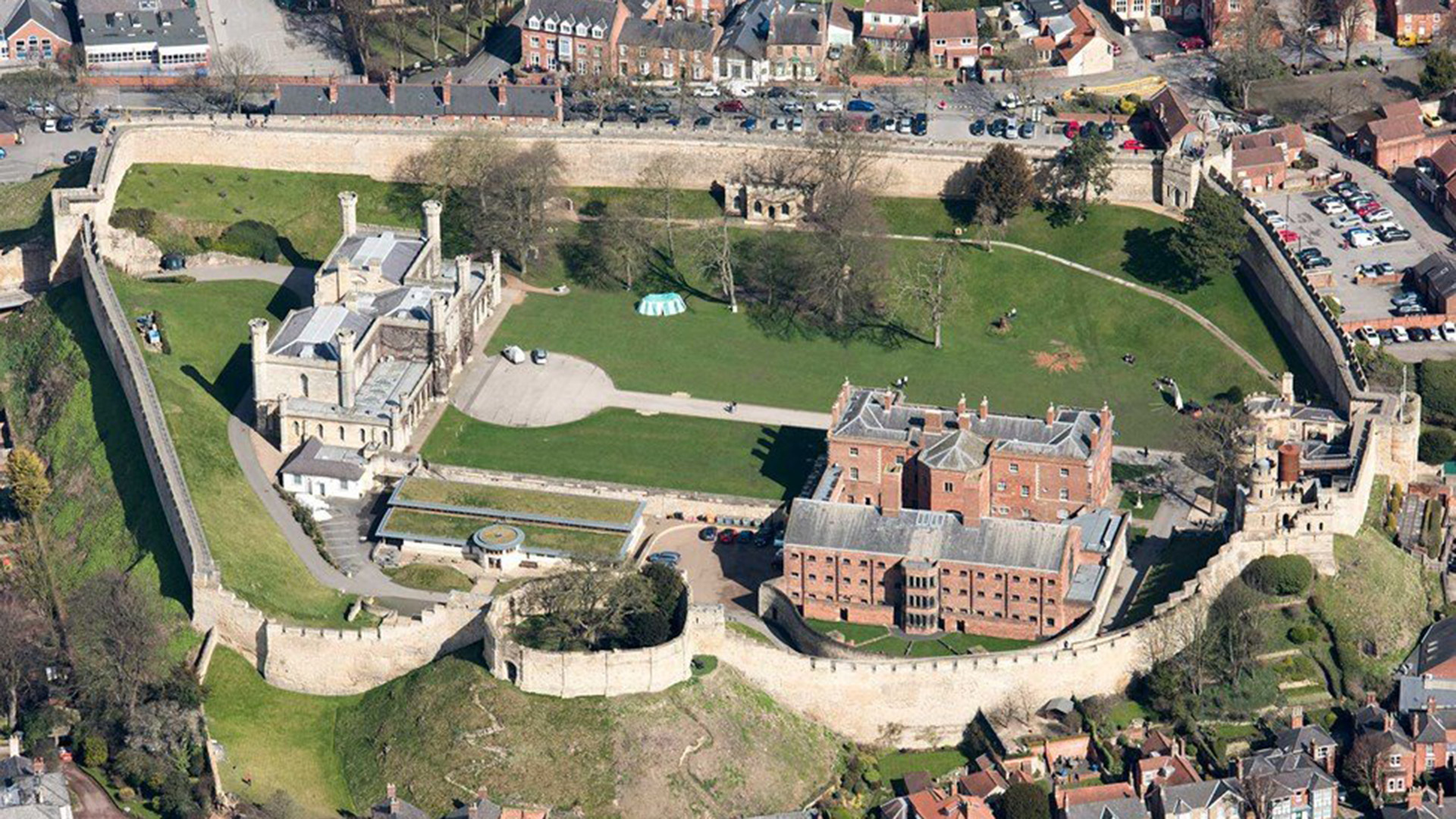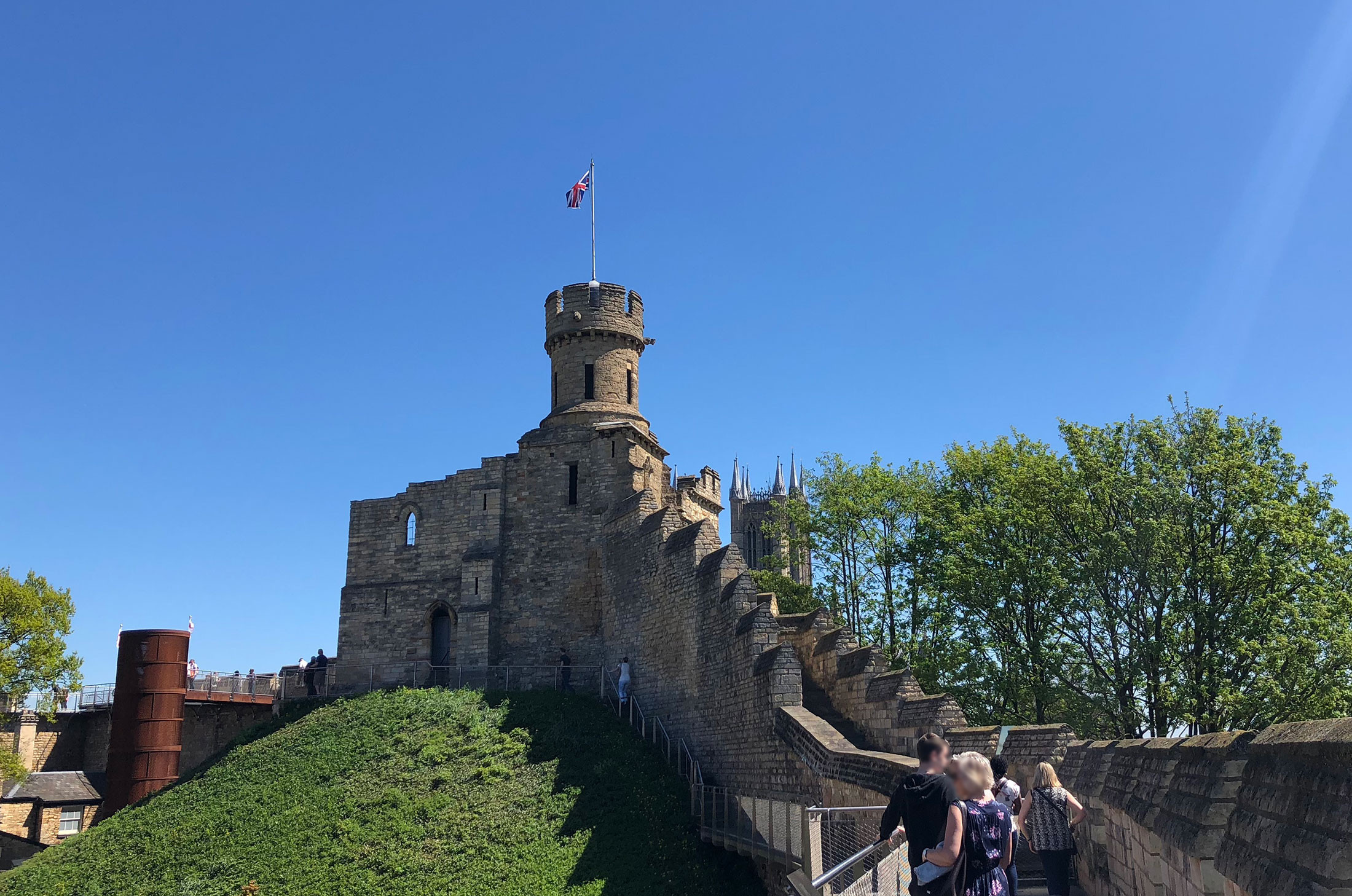Lincoln Castle, located in Lincoln, England, is a prominent medieval castle built in the late 11th century by William the Conqueror on the site of an ancient Roman fortress. Unique in its design, Lincoln Castle features two mottes, a rarity shared only with Lewes Castle in East Sussex.
Throughout its history, Lincoln Castle has served various functions, including as a prison and a court, which continue to operate to this day. The castle is one of England’s best-preserved castles and is open to the public most days. Visitors can walk around the castle walls, enjoying panoramic views of the castle complex, Lincoln Cathedral, the city, and the surrounding countryside.

One of the castle’s most notable features is its display of one of the four surviving exemplars of the Magna Carta of 1215. Today, Lincoln Castle is owned by Lincolnshire County Council and is a scheduled monument, ensuring its preservation for future generations.

After William the Conqueror’s victory at the Battle of Hastings in 1066, he continued to face resistance in northern England. To consolidate his control, he constructed several major castles in strategic locations, including Cambridge, Huntingdon, Lincoln, Nottingham, Warwick, and York. These castles were vital for projecting his power and managing the Danelaw area, which had been influenced by Scandinavian settlers.
When William reached Lincoln, he found a significant Viking trading center with a population of 6,000 to 8,000. The remains of the old Roman fortress of Lindum Colonia provided an ideal strategic position for the new castle, situated 60 meters above the surrounding countryside. Lincoln was also at a crucial crossroads of important routes:
- Ermine Street: The main north-south Roman road connecting London and York.
- Fosse Way: Another key Roman route linking Lincoln with Leicester and the southwest.
- River Trent valley: Providing access to York via the River Ouse.
- River Witham: Connected to the River Trent and the North Sea via the Fossdyke Roman canal.
- Lincolnshire Wolds: Overlooking the Lincolnshire Marsh to the northeast.

Building Lincoln Castle required demolishing 166 “unoccupied residences” to clear space. The construction began with a wooden keep in 1068, which was later replaced with stone. The castle is unique in having two mottes, a feature shared only with Lewes Castle. The Roman wall was integrated into the new fortification, serving as part of the curtain wall and retaining the mottes.

Lincoln Castle played a significant role during the First Battle of Lincoln in 1141, a conflict between King Stephen and Empress Matilda. During this period, the Lucy Tower was added. The castle was also besieged during the Second Battle of Lincoln in 1217, amidst the First Barons’ War following the sealing of Magna Carta. New barbicans were added to the west and east gates afterward.


In 1375, Agatha Lovel, accused of murdering her master Sir William de Cantilupe, escaped from Lincoln Castle by bribing her jailers. The bailiffs were later tried for their involvement but were either pardoned or acquitted.

Today, Lincoln Castle remains a significant historical site, open to the public, with its medieval structures well-preserved. Visitors can explore the castle walls and enjoy views of Lincoln Cathedral, the city, and the surrounding countryside. The castle also houses one of the four surviving copies of the Magna Carta. Now owned by Lincolnshire County Council, Lincoln Castle is a scheduled monument, ensuring its preservation for future generations.
Also Recommended: Experience a different level of Northumberland at England’s finest fortress Bamburgh Castle.

